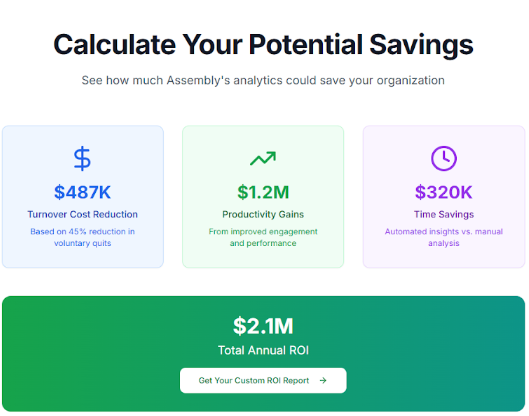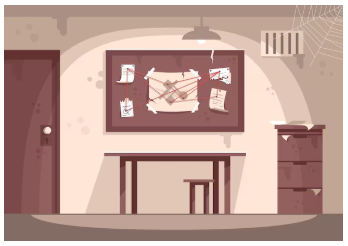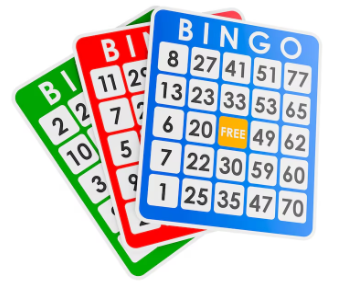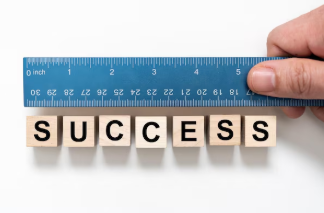31 Best Christmas Gifts for Coworkers & Teammates (That Everyone Will Appreciate)
Discover 31 Christmas gift ideas for Coworkers that are thoughtful, practical for stress-free holiday giving.


Encourage collaboration and teamwork with a recognition program that is effective and enjoyable!
Book a demo now to take advantage of some incredible offers!
27 team building activities for work to improve teamwork, morale, and engagement with indoor, outdoor, and virtual options

According to Gallup, only 31% of U.S. employees feel engaged at work. The rest are quietly checking out a disengagement crisis that costs companies nearly $1.9 trillion in lost productivity every year.
This isn’t just about numbers but it’s about people who’ve lost the spark of working together. The laughter between teammates, the energy in a brainstorm, the simple feeling of belonging. You can’t fix that with another meeting or survey. Real connection comes from shared moments that remind people why they love being part of your team.
That’s where intentional team-building activities make all the difference. The right activities don’t just fill a calendar; they rebuild trust, inspire creativity, and lift morale across in-office, hybrid, and remote teams alike.
In this guide, you’ll discover 27 best team building activities for work ideas to bring your people closer and strengthen collaboration. Plus, see how Assembly can work with you to track team engagement simply and and effectively.

Before we get to the activities list, let’s explore what actually makes team bonding activities at work successful.
A good activity should align with a specific goal, whether it's improving communication, fostering collaboration, or just letting your team blow off steam.
If your staff feels like they are being forced to do an activity with no meaningful purpose, they may feel like they’re wasting time. But if you explain the primary goal of the activity, everyone will understand what they are doing and why, and help them all focus towards the same objective.
Everyone should feel welcome to join in, regardless of personality type or physical ability. And if you have both in-office and remote employees, try to find activities that allow those not in the office to be able to take part in the fun. This can reinforce the bonds for your entire team and ensure that no one is left out.
Don’t wait to schedule fun team-building activities until you notice your team spiraling in burnout. Make it a regular part of your company culture. Earmark time in the annual calendar for team bonding, whether it’s monthly or quarterly, and advertise it around the office to build some excitement.
You can even recruit some of your staff to help with the planning. But make sure the events and team building activites don’t coincide with big work deadlines; it’s hard to have fun in the workplace when you’re stressed out about completing a project.
Tips for Success:
Scheduling regular activities is a good start, but that’s not enough to ensure you have a positive outcome. You’ll find it difficult to know if your team-building program is working if you don’t track participation and collect feedback. Assembly has many effective solutions that make it easy for you to review what’s working and what’s not, and will help you determine what shifts need to be made to boost the morale and camaraderie of your team.

Indoor team-building activities offer a simple, low-pressure way to bring people together right where they already are without any elaborate planning. These team building exercises for work are designed to be accessible, energizing, and easy to run whether your team work in a corporate office, a shared space, or even a conference room.

This is a low-pressure way to reflect on shared experiences and help team members learn about the company and each other in a playful way.
While it is fun to win prizes, this trivia game is not really about who can remember the most obscure company facts. It’s about sharing laughs and helping everyone feel a little more connected to the people and stories that make your workplace unique.
To play this, split the group into small teams and quiz them on company facts, pop culture, team member fun facts, or your industry. The team that gets the most answers right wins a prize!
Activity Requirements
Tip: Host trivia over lunch or at the end of the week to keep energy high, and rotate quiz hosts to involve more people.

Solving an escape room promotes quick thinking, creativity, and collaboration under time pressure, same as problem-solving skills you need to complete workplace projects.
This activity can also uncover hidden talents of teammates, allowing them to shine in a non-work environment. The excitement and satisfaction of solving the puzzles and finally escaping is a fantastic shared bonding experience!
To play this game, make small groups (4-6 people) and set up a themed escape room experience in the office, where teams solve puzzles to “escape” within a time limit.
Activity Requirements

This lighthearted game gives your team members a chance to open up and share a little piece of their story. Its simplicity enables everyone to be as fun, quirky, or serious as they want, while learning personal tidbits about each other.
In this, each person shares two truths and one lie about themselves. The group guesses which is the lie.
Activity Requirements
This seek-and-find game gets your whole team moving and interacting with spaces and coworkers they may not normally engage with. It’s fast-paced, a little competitive, and a great way to break up the day. But more than that, it gets people moving, laughing, and working together in ways that go beyond their usual roles.
Activity Requirements

This classic small group challenge promotes communication, patience, and problem-solving. It can also reveal team dynamics like who takes the lead, who encourages others, and how the group works together under a little pressure (hopefully with a lot of laughter).
In this activity, everyone stands in a circle and places their hands into the center. Each person grabs two different hands from people across the circle, avoiding anyone next to them. The group then works together to untangle themselves without letting go of anyone’s hands.
Activity Requirements
Tip: This activity can feel a little intimate and can make some people feel uncomfortable, so always offer a pass option.
Outdoor activities encourage connection, collaboration, and provide much needed fresh air while giving your team a chance to recharge, move, and simply enjoy time together.

The friendly rivalry in Tug of War fosters team energy. Your teams need to coordinate with each other, using both their combined strength and strategic timing to win. It encourages teams to coordinate, cheer each other on, and share a win (or a good laugh after a fall in the grass).
Activity Requirements

A common cause creates a deeper sense of purpose and shared values within the team. Whether you’re walking for a nonprofit or picking up litter in a local park, the focus shifts from individual tasks to collective impact. It also reinforces company values like service, empathy, and purpose.
Activity Requirements
Sometimes the most effective way to promote team unity is through simple pleasures, such as sharing food, sitting in the sun, and playing a game of cornhole. A team picnic is a low-stress way to unwind and build relationships in a space that doesn’t require presentations or performance.
You can set up a casual outdoor lunch with optional games. People can mingle, relax, and play at their own pace.
Activity Requirements

Plan a group hike on a nearby trail, nature reserve, or scenic route. Choose a path that’s accessible and aligns with your team’s comfort level (consider elevation, distance, and terrain). Don’t rush this event; build in time for breaks, photos, and quiet moments.
Being in nature reduces stress and clears the mind, which promotes spontaneous conversations and creates amazing memories. Nature walks also tells your team that the company values work-life balance and employee wellness.
Activity Requirements
Virtual team-building activities can help make remote staff feel more connected to the rest of the team. These events bring everyone together for some fun and camaraderie, regardless of location or time zone.
Sometimes, team connection starts with a simple cup of coffee.
In virtual coffee roulette, teammates are randomly paired for a short video chat with no agenda, no pressure, just conversation. Even a 15-minute chat can strengthen trust and reduce that "siloed" feeling.It’s a fun way to spark casual moments that remote work often misses.
Rotate matches weekly or biweekly to keep things fresh and cross-functional. Tools like Assembly can even automate the pairings for you. Just make sure the meetings aren’t scheduled when the team has a looming deadline.
Activity Requirements

Bingo is simple to set up and easy for everyone to participate with minimal time commitment. The bingo squares can be filled with silly requests or statements that require team members to seek out others to find someone who meets the criteria, which encourages interaction across teams, even for people who might not naturally cross paths.
Distribute bingo cards and challenge team members to complete tasks or connect with colleagues who fit specific prompts. First to complete a row or full card and announce it to the team wins a fun prize.
Activity Requirements
Bring out your team’s playful side with a Virtual Game Night.
Pick a day and host a virtual game night after work or block off an afternoon. Rotate games based on the team’s interests, such as trivia, drawing games, or cooperative storytelling.
Activity Requirements

Invites your team members to share little parts of their lives through items around their house.
Each team member brings an item from their home and shares a quick 1-2 minute story about it. You can assign a fun theme (see below), or let people surprise the group. Rotate the spotlight until everyone’s had a turn.
Prompt Ideas:
Activity Requirements

It's a fast, fun, and low-pressure challenge that kicks off your meetings with a good laugh. Backgrounds often spark surprising conversations or inside jokes, helping teams connect without needing much structure.
Share a background theme in advance (examples below) with your team. At the start of the meeting, everyone logs on with their custom virtual background. Teammates take turns guessing the meaning behind each person’s background. Keep score or just enjoy the chaos.
Theme Ideas:
Activity Requirements

Before your next team call, ask everyone to secretly share a photo of their real workspace, no tidying up allowed! During the meeting, display each photo and have the group guess whose desk it is.
It’s a lighthearted way to peek into everyone’s work world from cable chaos to cat cameos and spark fun conversations about setups, habits, and personality quirks.
Activity Requirements
Tip: Avoid judging “clean” vs. “messy” and focus on curiosity and fun. Consider doing a round where people guess the most unusual item visible in each space.
Small group team-building activities create a space for teammates to slow down, listen, and connect with each other beyond the workplace tasks. These activities are designed to strengthen trust, spark creativity, and build connections that promote high-level productivity.

Board games are best games to build teamwork in the workplace that create natural moments of teamwork without forcing small talk. They encourage light competition and lower social barriers. It’s a great way to help team members get to know one another in a relaxed environment.
You can set up one or more game stations, and let small groups run through each activity. Choose games that are easy to learn and fast-paced, but not too serious or complicated.
Activity Requirements
Tip: Rotate game types (creative, trivia-based, cooperative) depending on your team’s vibe. Snacks help keep the fun going longer.

A Mini Olympics event encourages team spirit while creating fun and playful memories for everyone in the group. The various activities also give people a chance to highlight their game skills, such as speed, creativity, or agility.
Create a few short physical or problem-solving challenges and divide your team into small groups or pairs. Assign points for each event, like balloon races, paper toss, mini obstacle courses, or timed trivia. Keep it playful and fun, not overly competitive.
Activity Requirements
Tip: Include a mix of physical and non-physical events so everyone can participate comfortably. Bonus points for themed team names and creative team cheers.
This blind drawing is silly and fun, but a useful exercise in communication, active listening, and patience. It reveals how important clarity and understanding are in everyday teamwork.
In this activity, one person describes an image (you can prepare funny or abstract images ahead of time) while their partner is blindfolded and tries to draw it based on the other person’s words. The describer can’t say what the object is, only its shape, size, or position. After the round, the two switch roles.
Activity Requirements
Icebreakers team activities help lower defenses, spark curiosity, and make space for people to show up as more than just their job titles. Whether you're onboarding a new hire or kicking off a cross-functional team, these light, simple activities help people connect quickly and with little pressure.
Go around the room (or screen) asking teammates to choose between two fun or surprising options, “Would you rather have coffee with your favorite author or your favorite leader?” or “Would you rather give up email or video calls for a month?”
It’s silly, lighthearted, and guaranteed to start great conversations. You’ll be surprised by what people reveal and the stories that unfold.
Activity Requirements
Tip: Let team members submit their own questions to keep it fresh and inclusive.

Human Bingo breaks the ice fast and encourages organic conversation. It gives people an easy entry point to connect and naturally share interesting tidbits about each other.
Create a bingo card filled with traits, experiences, or skills (e.g., “Has run a marathon,” “Speaks more than two languages,” “Loves spicy food”). Distribute one to each participant. Team members mingle or chat and ask each other if they match any square. The goal is to get five in a row and yell BINGO!
Activity Requirements
Tip: Include a mix of light, funny, and meaningful prompts. You can also theme your bingo cards (e.g., onboarding edition, remote worker edition, etc.)
The Name Game builds name recognition, listening skills, and concentration. It gives team members a small but personal detail to remember about each person.
In this activity, each person introduces themselves using a fact that starts with the same letter as their first name. For example, “Hi, I’m Brandon and I breakdance,” or “I’m Felicia and I love falafels.” As the activity continues, each person has to repeat all the names and facts that came before them from the rest of their teammates.
Activity Requirements
Tip: This is ideal for new teams, onboarding sessions, or in-person workshops. If your team is large, split into smaller circles to keep it manageable.
Creativity activities are designed to stretch that creative muscle in low-pressure, high-fun ways that encourage imagination, collaboration, and new ideas.
In LEGO challenge activity teams use metaphor and collaboration to express ideas they may not have verbalized otherwise. The team builds LEGO without an instruction manual that brings out creativity that may have been dormant before.
It’s a surprisingly meaningful way to surface fresh ideas and build collaboration through storytelling.
How to organise - Give each team a theme (e.g., "The future of teamwork" or "Our company as a spaceship") and 15-20 minutes to build something using only LEGOs. Then have each team present their creation and story behind it.
Activity Requirements
Tip: No LEGOs? Use recycled materials, office supplies, or digital whiteboards.

Collaborative art activity encourages all skills like reflection, unity, and visual storytelling that can carry over into the workplace.
You can invite your team to contribute to a shared piece of art, either physically (e.g., drawing on a big poster in the office) or digitally (tools like MURAL, Canva, or FigJam). Choose a theme like “What teamwork means to us” or “Our shared vision.”
Activity Requirements
Tip: Display the final piece in your office or internal workspace. It serves as a lasting reminder of what you built together.
Humorous team-building activities help people drop their guard, bond through shared silliness, and create inside jokes that strengthen relationships over time.

Team members choose a song, prepare a lip sync routine (no actual singing needed!), and perform for the group. Encourage creativity with costumes or props if they’re comfortable.
It’s hilarious, freeing, and an unexpected confidence booster. People show up in new ways, and remember these moments long after the meeting ends.
Activity Requirements
Tip: Keep it optional and low-pressure. Highlight enthusiasm over polish.

DIY activity builds storytelling, teamwork, and presentation skills, and culminates with a hilarious memory that teams can chat about over and over again.
Split into teams and assign each one a random item (a stapler, a paperclip, a banana). They have 15 minutes to create and pitch a commercial for their “product,” complete with slogan, benefits, and a sales pitch.
Activity Requirements
Tip: Record the commercials and play them back for added fun. Offer silly prizes like “Most Convincing” or “Best Jingle.”
These ultra-short activities are perfect for kicking off calls, resetting team energy, or wrapping up the week with a smile. They’re fast, low-pressure, and easy to drop into your routine, even at the last minute.
This quick creative challenge builds teamwork through listening and improvisation. The One-Word Story proves that collaboration doesn’t need structure, just curiosity and flow. It’s fast, unpredictable, and hilarious every single time.
In this, go around the virtual or in-person room, with each person adding one word to an unfolding story. No planning; just build it one word at a time. “Once…”, “upon…”, “a…”, “time…” and so on.
Activity Requirements
Tip: Capture the story and post it somewhere for your team. Everyone will enjoy re-reading the hilarious creation.

Rapid-Fire Questions spark quick laughter, curiosity, and warmth helping teams see each other as people, not just job titles. These little details help build familiarity, connection, and even spark future conversations.
In this activity, go around the group asking one quick question per person. It can be something fun, unexpected, or reflective. Questions like:
Activity Requirements

You must track the team building impact over time to make these activities strategic investment instead of just a fun distraction. Here’s how you can start measuring what matters:
A strong sign of success is consistent or growing participation, especially if activities are voluntary. Keep an eye on who’s opting in, how often they attend, and how engaged they seem during sessions. Low turnout might indicate a mismatch between the activity and team needs, so make a quick pivot and try something new.
Assembly has a great tool called community spaces to help you automatically log participation, promote engagement, and provide analytics on group feedback to help you spot trends or gaps.
Don’t just guess what your team thinks; ask them for their opinions. A quick post-event survey (even just two or three questions) can reveal whether the activity felt meaningful, inclusive, and fun. Over time, those insights will guide you toward what actually strengthens connection.
With Assembly’s predictive analytics you can turn those responses into data-backed recommendations that help refine your future team-building strategy.
Look for positive movement in collaboration, communication, engagement scores, or productivity. Even small improvements like faster project completion or fewer communication breakdowns signal progress.
Improvements in these areas, especially after consistent team-building efforts, can signal real impact.
Assembly can give your managers the tools they need to ensure they perceive positive changes or recognize areas that need improvement.
People want to feel seen. Recognizing those who show up, lead activities, or support others during events reinforces a positive culture and encourages ongoing participation. It’s not just about fun; it’s about showing your team that their effort to connect matters.
With Assembly, you can reward active participants with shoutouts, points, or custom perks building momentum while reinforcing core values.
Team building isn’t about forced fun, it’s about intentional connection. Whether it’s a five-minute icebreaker or a full-day offsite, the goal is to help people feel supported, included, and energized to work together.
With Assembly, you can track participation, collect feedback, recognize contributions, and continuously improve your approach.
Team building is about building trust, team bonding and inspiring creativity. When done with intention, these activities turn coworkers into collaborators and everyday work into something people genuinely enjoy showing up for.
With Assembly, you can keep that momentum going tracking participation, celebrating engagement, and turning insights into actions that strengthen your culture over time. Because when teams feel connected, performance, retention, innovation follows naturally.
Ready to build a culture your team loves being part of? Start today with Assembly and turn everyday interactions into lasting engagement.
Heading
Lorem ipsum dolor sit amet, consectetur adipiscing elit. Suspendisse varius enim in eros elementum tristique. Duis cursus, mi quis viverra ornare, eros dolor interdum nulla, ut commodo diam libero vitae erat. Aenean faucibus nibh et justo cursus id rutrum lorem imperdiet. Nunc ut sem vitae risus tristique posuere.
Heading
Lorem ipsum dolor sit amet, consectetur adipiscing elit. Suspendisse varius enim in eros elementum tristique. Duis cursus, mi quis viverra ornare, eros dolor interdum nulla, ut commodo diam libero vitae erat. Aenean faucibus nibh et justo cursus id rutrum lorem imperdiet. Nunc ut sem vitae risus tristique posuere.
Heading
Lorem ipsum dolor sit amet, consectetur adipiscing elit. Suspendisse varius enim in eros elementum tristique. Duis cursus, mi quis viverra ornare, eros dolor interdum nulla, ut commodo diam libero vitae erat. Aenean faucibus nibh et justo cursus id rutrum lorem imperdiet. Nunc ut sem vitae risus tristique posuere.
Heading
Lorem ipsum dolor sit amet, consectetur adipiscing elit. Suspendisse varius enim in eros elementum tristique. Duis cursus, mi quis viverra ornare, eros dolor interdum nulla, ut commodo diam libero vitae erat. Aenean faucibus nibh et justo cursus id rutrum lorem imperdiet. Nunc ut sem vitae risus tristique posuere.
Get the foundational knowledge on creating an employee recognition program that boosts employee engagement and helps them feel valued.
Explore Guide